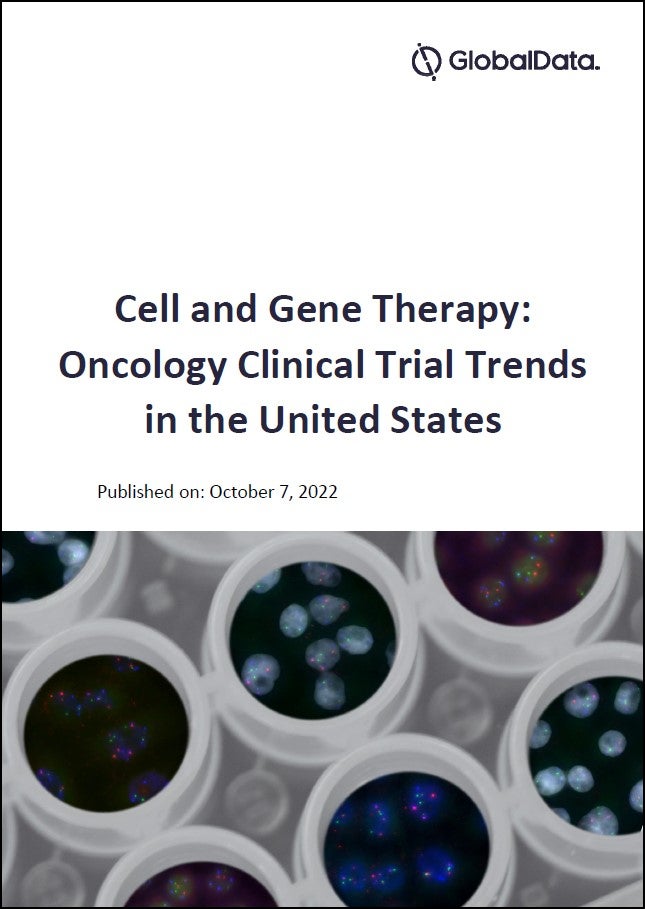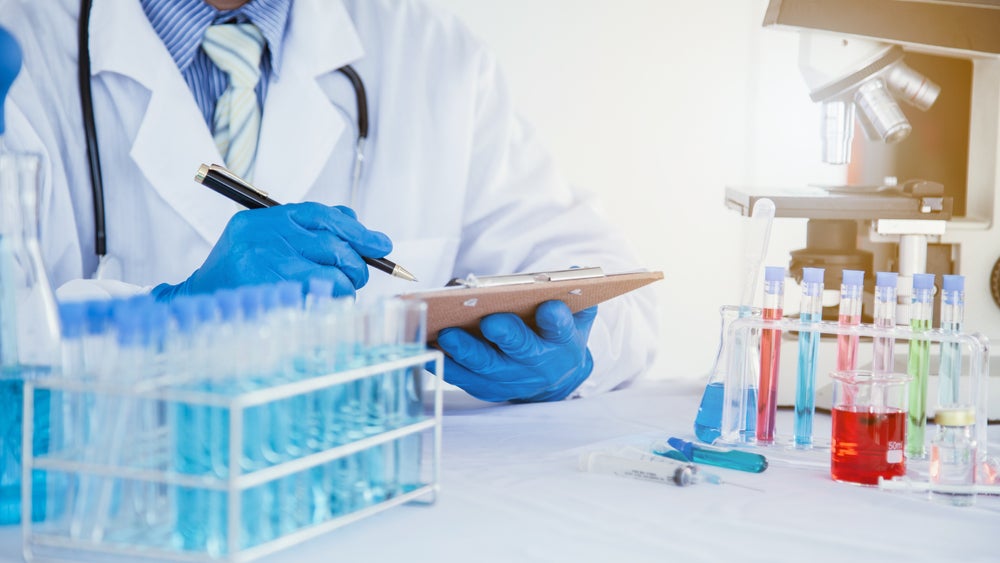For gene therapies, identifying the right delivery method can be challenging. The traditional routes of drug delivery like injections and pills are not often viable for this class of therapy targeting neurological disorders, as a dose high enough to cross the blood-brain barrier could be dangerous.
PTC Therapeutics is harnessing a technique proven in Parkinson’s disease to test an experimental one-time gene therapy, PTC-AADC, for rare childhood genetic disorder AADC deficiency. A life-shortening disease for which there is currently no treatment, AADC deficiency is characterised by a genetic mutation in the gene that makes an enzyme responsible for producing dopamine. In the most severe cases where dopamine production is almost non-existent, these children can barely move at all.
The novel technique delivers the gene therapy into a specific, easier-to-access area of the brain called the putamen. In ongoing trials, the therapy coupled with this technique is showing life-changing outcomes representing huge hope for children and parents.
Clinical Trials Arena sat down with PTC’s chief development officer Matthew Klein to discuss the incredible results seen in trials, the challenges of conducting trials in children with genetic diseases and the promise of this delivery technique for other neurological disorders.

KP: Tell us about PTC’s one-time gene therapy for AADC deficiency and the technique used to deliver it.
MK: When we think about the promise of gene therapy we talk about replacing genes that don’t work so that you can make enzymes or proteins, and that’s exactly what this gene therapy does. It gives a working copy of that gene that then allows for the production of dopamine. What’s really special about this program and really innovative and exciting is that not only do we have a gene therapy that fixes the cause of the disease, but we also deliver the gene therapy in a way that we ensure it gets to the part of the brain where it has to go in and do its thing.
How well do you really know your competitors?
Access the most comprehensive Company Profiles on the market, powered by GlobalData. Save hours of research. Gain competitive edge.

Thank you!
Your download email will arrive shortly
Not ready to buy yet? Download a free sample
We are confident about the unique quality of our Company Profiles. However, we want you to make the most beneficial decision for your business, so we offer a free sample that you can download by submitting the below form
By GlobalDataSee Also:
The cells in the brain that need dopamine to work are mostly located in a part of the brain called the putamen and what we’re able to do is use neurosurgical techniques to make sure we deliver the gene therapy right there, through a minimally invasive procedure. It’s really quite exciting that we’re able to give a gene therapy, be assured it goes where it needs to go and it’s made by cells that stay – they don’t go away so you have a continuous source for these children of the thing that they’re missing.
KP: How did Parkinson’s disease provide a proof of concept for delivery to the putamen in diseases characterised by dopamine problems?
MK: A lot of movement disorders are caused by that dopamine loss. Parkinson’s disease is probably the most common disease affected by dopamine problems where the cells that make dopamine die. Over time, people affected by Parkinson’s disease have profound motor defects.
This programme is a great example of innovations in medicine – leveraging things that are going on in other areas. Stereotactic surgery is used for a number of procedures related to Parkinson’s disease or bad epilepsies, for example. It’s almost like a Google map that you can develop to tell you from the outside how you get to where you want to go. If you have a gene therapy and want it to go to this one part of the brain, giving it through the vein and having enough that it gets to the entire body crossing the protective brain barrier – by the time it gets to that one spot, who knows how much they’re actually getting. You’d have to give such high doses that you start having real safety risks. The other part is you just can’t be sure it’s getting where it needs to go, and that’s really important.
Much of the development work of our product was done at the National Taiwan University and some was done in Japan. They did a lot of the work first looking at Parkinson’s disease. When it was delivered through the putamen it benefited in preclinical models.
AADC deficiency is actually a disease where this enzyme is broken so it made sense to do the same thing – giving it through the putamen as that’s where the dopamine is used.
We give much lower doses of this gene therapy than others that are in development for other diseases. That’s really important for safety but also in terms of manufacturing – we don’t need as much to do the job.
KP: Tell us about the clinical trials assessing the therapy around the world.
MK: In our clinical studies, the first thing we can see from brain scans is that dopamine production goes up. Then we start seeing kids develop that motor function they didn’t have. They’ll start to be able to raise their head, be able to sit up, some are able to stand. We even have kids who are able to walk independently. We start to see the kids achieving milestones and the number of infections go down.
The other thing we’ve noted in this programme is that over the course of many years, we see the children continue to develop. We have kids who are now up to nine years following therapy and we can see on the brain scans that they’re still making dopamine so the therapy is still there doing its thing and they continue to have motor and development benefits. In addition to all these great data around the effects of the drug, we also have really good long-term safety data.
We have three trials in Taiwan that are ongoing because we continue to follow the children over time, which is really important to understand the long-term benefits, and we’re seeing the durability of the gene therapy.
There was a study done in Japan with a very similar product that also saw very encouraging results. Not only in the most severe patients but in some patients who are slightly less severe, and also in teenagers. This gives us a large set of data showing the potential for delivering and providing a lot of benefit for children of all ages.
KP: Do you think this is a therapy that will last a patient’s lifetime?
MK: We do expect it to last a lifetime. We’ve been following these kids now for about 10 years, which is a long time for clinical trials, but it’s important. The good news is we’re seeing the ability of these kids continuing to improve so that’s really encouraging.
KP: Conducting trials in young children is notoriously difficult. How do you overcome some of these challenges?
MK: We at PTC have been doing clinical trials in kids with all different types of disease for a very long time. We understand the burden of disease on the child and the family. It takes a village to care for many of these children. The demands on time, finances and emotional support are very challenging.
We also realise that when we do clinical trials folks have to come to trial sites. That’s sometimes really hard if you have children in wheelchairs or who have feeding and breathing devices so we’re always incredibly aware of those challenges and grateful for the sacrifices that families and patients make to participate in clinical trials. We want to make sure that we work with hospitals that understand those challenges and are equipped to deal with them and have the support staff to help make a family feel welcome, provide nutrition and physical therapy support and nursing.
Selecting the right partners is one of the things that’s really important when you do clinical trials and making sure that the sites you work with have that experience and expertise because it really is a team sport. It’s a collaboration between patients, families, physicians, nursing care, and companies. We all work together on this.
KP: Is there any element of decentralisation in your AADC deficiency trials to reduce patient burden?
MK: There’s no understating the impact of Covid-19 on everything we do. I think the one silver lining is it accelerated this move towards decentralised and remote clinical trials, which I think is incredibly important. In general, I think it allows more people to participate. It’s a much more inclusive approach and reduces all those burdens in terms of having to come to a study site.
We’ve now implemented that in a number of our ongoing trials. With Covid-19 where you have children who really are immunocompromised, getting on a plane is kind of scary. So in all of our clinical trials as often as possible we’ve tried to do visits that are remote and use telemedicine and remote assessments. We’re doing that because we realise it’s the right thing to do for patients and I think it’s also great to see that the regulatory authorities are embracing that more and more as long as we put the right safeguards in place to ensure we’re collecting quality data.
KP: What is the potential for this kind of delivery technique for other diseases?
MK: I think what’s really exciting is the idea of using stereotactic surgery, a minimally invasive surgery, to deliver a gene therapy to the brain. It has a number of potential indications. It doesn’t just have to be the putamen. We have a programme in another rare disease called Friedrich ataxia that we deliver to the cerebellum and there are other drugs in development going to other parts of the brain.
What’s so pioneering about this AADC deficiency program is that it’s hopefully going to be the first of many. I view this as the beginning of what will hopefully be a number of therapies that are given directly to the brain to target really severe brain diseases for which we have no treatments.
KP: You are currently in talks with the EMA about getting the therapy approved. Is it more challenging dealing with regulatory authorities when developing a gene therapy?
MK: We are hoping to have a decision or opinion from the European authorities before the end of this year which is very exciting.
I think anytime you have something that’s new and innovative it’s more challenging. It’s always easier no matter what you’re doing, clinical trials or drug development, working through a regulatory approval process if there’s a precedent as everyone has an idea of what success looks like. There’s so much gene therapy work going on, which is so great but we still have very few drugs that have ever been approved. It’s challenging, but we’re excited and embrace that we’re a company that’s pioneered new therapies, new techniques and new technologies. We’re really excited to be where we’re at with this therapy and really look forward to bringing it to as many patients that can benefit as possible.
Cell & Gene Therapy Coverage on Clinical Trials Arena supported by Cytiva.
Editorial content is independently produced and follows the highest standards of journalistic integrity. Topic sponsors are not involved in the creation of editorial content.







